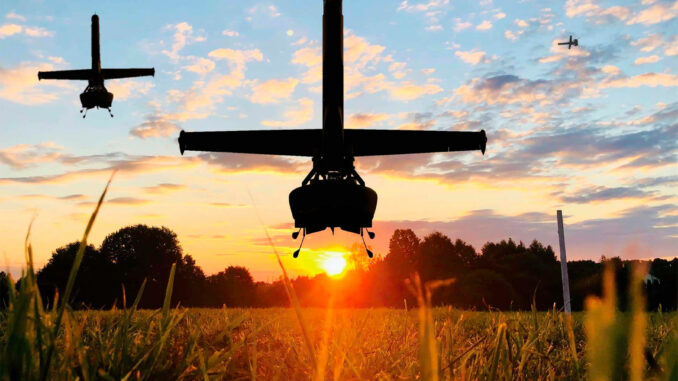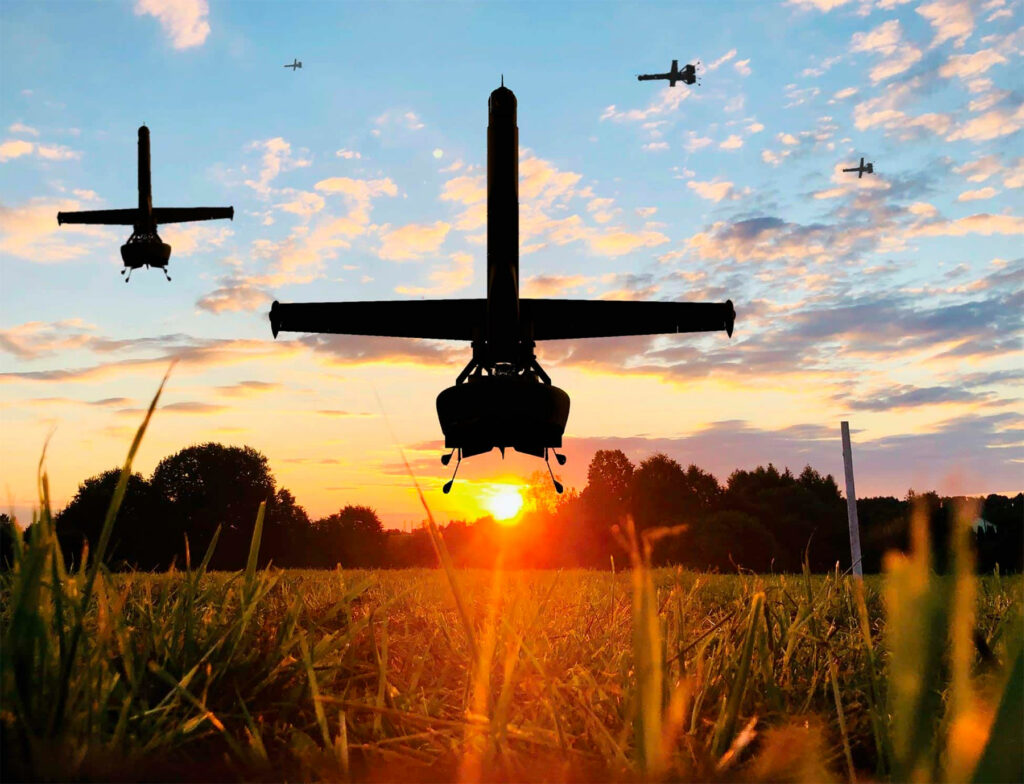
The V-BAT drone, designed by Shield AI, is undergoing tests in Ukraine to assess its resilience against Russian electronic warfare systems.
The V-BAT drone, developed by Shield AI, is being tested under real-life conditions in Ukraine to assess its resilience against advanced Russian electronic warfare (EW) systems. Since its arrival in June, the V-BAT has successfully carried out reconnaissance missions, including the identification of a Russian missile depot which was subsequently destroyed by a HIMARS strike. With its ability to perform vertical take-offs and landings in confined spaces, the V-BAT offers unique strategic advantages.
Technical features of the V-BAT
The V-BAT is a tactical drone weighing 56.5 kg, capable of carrying up to 11 kg of payload. It is designed for extended reconnaissance and surveillance missions, with a flight autonomy of up to 10 hours. The drone is equipped with advanced optical sensors and a target recognition system powered by artificial intelligence (AI), enabling it to provide accurate intelligence.
The ability to take off and land vertically over areas as small as 4 × 4 meters is a major asset. This feature enables the V-BAT to operate in difficult terrain and confined spaces, increasing its tactical versatility. Its propulsion is provided by a single encapsulated rotor, reducing its acoustic signature and making it easier for the enemy to avoid detection.
Real-life performance and resilience to EW systems
The field tests carried out in Ukraine are designed to assess the V-BAT’s ability to operate in a densely populated EW environment. Russian EW systems are renowned for their ability to disrupt and neutralize the communications and guidance systems of opposing UAVs. According to Shield AI, the V-BAT has demonstrated notable resilience, enabling Ukrainian operators to carry out critical missions.
A concrete example of this performance is the reconnaissance mission at Kherson, where the V-BAT identified a missile warehouse located 100 km behind enemy lines. This operation enabled a precise strike to be organized with a HIMARS system, helping to destabilize Russian military infrastructures.

Integration into the FTUAS program
The V-BAT is part of the Pentagon’s Future Tactical Unmanned Aircraft System (FTUAS) program, aimed at replacing the current Textron RQ-7 Shadow by 2026. This program, whose competition includes other industry heavyweights such as L3Harris Technologies, Textron Systems, and Arcturus UAV, aims to modernize the US military’s tactical UAV capabilities.
The V-BAT’s presence on Ukrainian soil offers a strategic advantage, enabling the USA and its allies to gather valuable data on the effectiveness of these systems in a truly contested operational environment. The experience gained from these tests could influence the Pentagon’s decision to award the FTUAS contract, scheduled for 2025.
Economic and strategic consequences
The integration of UAVs like the V-BAT into modern conflicts underlines the technological evolution and growing importance of the UAV industry. The global UAV market, estimated at over €20 billion by 2024, continues to grow, driven by demand for advanced reconnaissance and surveillance solutions. The results achieved by the V-BAT in Ukraine could lead to increased interest from armed forces and investors in UAVs with advanced AI capabilities.
For Ukraine, access to these technologies represents an enhancement of its defense capabilities against a sophisticated adversary. At the same time, the USA and NATO can exploit these tests to improve their UAV design and adapt their strategies in line with lessons learned in the field.
War Wings Daily is an independant magazine.